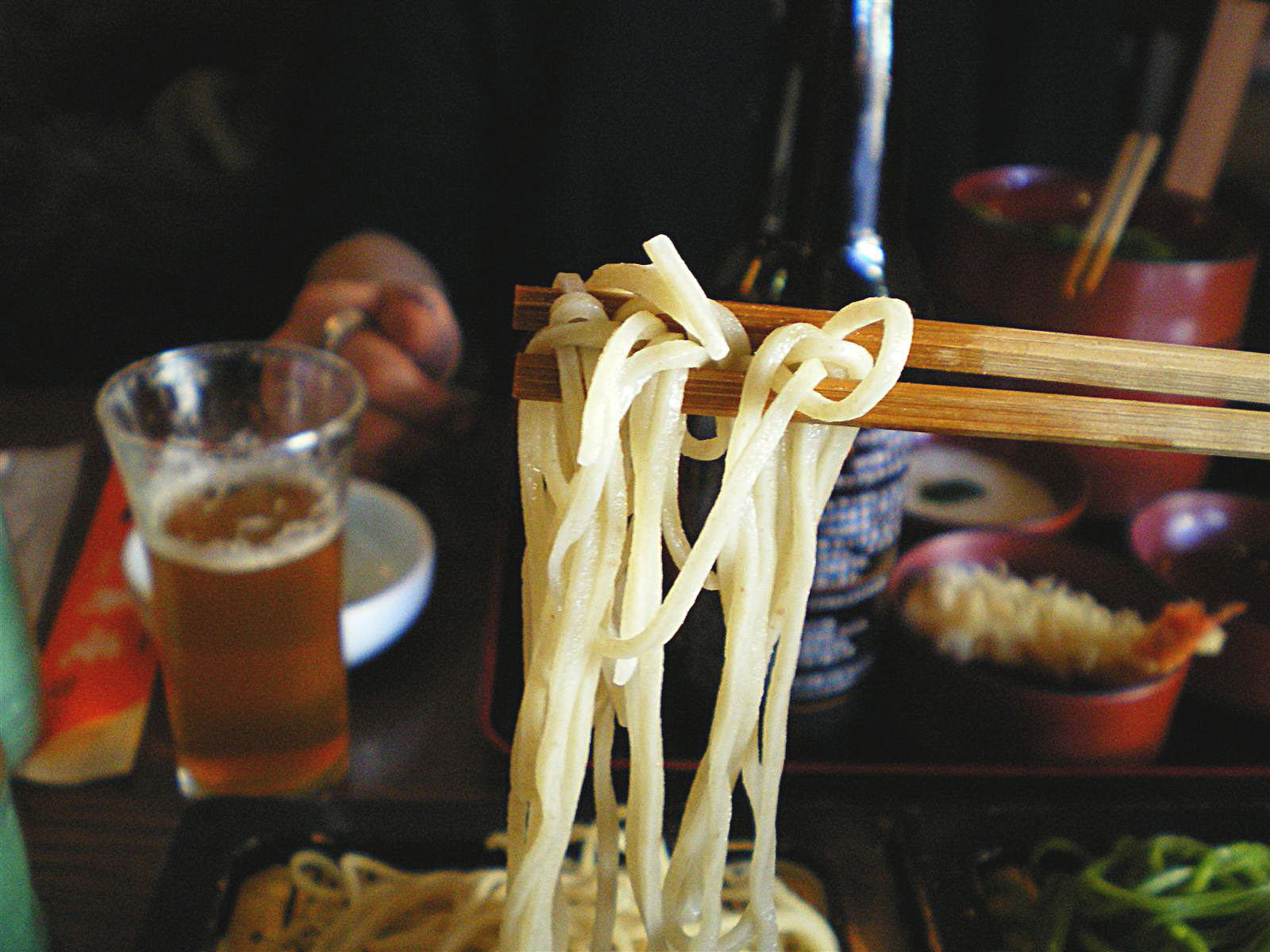Some men go out to buy that flaming red sportscar. Others embark on a messy but absorbing divorce process. Then there is of course, nirvana: the gorufujō (ゴルフ場, golf course). But in Japan, when men hit a certain age they have another option to turn to. The authentic mark of a honmono (本物, genuine) older man is that he foregoes material luxuries for the ibara no michi (いばらの道, path strewn with thorns) of soba-dō (そば道, the way of soba).
The bowl of soba is a deceptively simple phenomenon but, as with the cup of sencha (煎茶, green tea), it's fraught with philosophical meaning and requires vast amounts of chishiki (知識, knowledge) to make, not to mention a sheer lust and obsession for buckwheat.
On the other hand, unlike tea — whose history is laced with intrigue, power-mongering and murder — soba has no glamour to it. Uneventful and jimi (地味, modest and unobtrusive), it has provided solace for generations of Japanese ojisan (おじさん, the middle-aged blokes) who have given their lives to their lords, country and companies and want a little joy for a change. When the older J-male in your vicinity starts to leaf through soba magazines or announces his plan to stroll through Kappabashi (合羽橋, Tokyo's kitchenware and tool district) to procure a menbō (麺棒, soba rolling pin), soba-bōcho (蕎麦包丁, soba cleaver) and large wooden hachi (鉢, bowl), you know that he is about to stage an official exit from ordinary existence. His tamashii (魂, soul) has departed, into the ether-world of soba and the all-important issue of kona no haigō (粉の配合, the ratio of regular flour to soba flour). Is it 1 to 9 — as is said to be the ideal? Or maybe go for 0.2 to 9.8? A man can devote several decades to this deep and difficult problem, and a lot of them do.



















With your current subscription plan you can comment on stories. However, before writing your first comment, please create a display name in the Profile section of your subscriber account page.